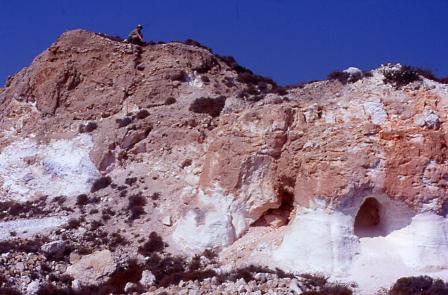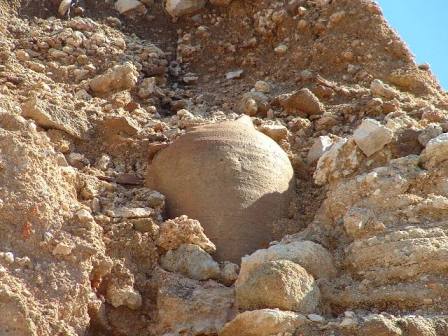Melian Earth
Melian Earth

‘White rock’ - possible early 'Melian earth' mine. SE Melos. Abundant pottery in overlying sediments. Exposed in quarry wall.
Melian earth was the best white pigment that the ancient world could produce, one of the four colours in the ancient painter’s palette.
It is most likely a mixture of kaolin and silica probably with minor alunite. It formed during acid sulphate alteration of rocks which lose iron and other soluble cations to leave white and transparent minerals behind.
The white rock may have been worked in Roman times in surface outcrops but it may also have been extracted from mines such as those in the image above revealed in a quarry at Loulos.
The site was recorded during our 2002 survey of SE Melos but has yet to be investigated in detail.

Amphora in sediments overlying the tunnelled 'white rock', Loulos.
References
McNulty, Arbory Elizabeth 2000. Industrial Minerals in Antiquity: Melos in the Classical and Roman Periods. Unpubl. PhD. Thesis. Department of Archaeology and Division of Earth Sciences. University of Glasgow.
Photos-Jones, E., Hall, A.J., Atkinson, J.A., Tompsett, G., Cottier, A. and Sanders, G.D.R. 1999. The Aghia Kyriaki, Melos, Survey: prospecting for the elusive earths in the Roman period in the Aegean. The Annual of the British School at Athens. 94. 377-413.
Hall, A.J., Fallick, A.E., Perdikatsis, V. and Photos-Jones, E. 2003. A model for the origin of Al-rich efflorescences near fumaroles, Melos, Greece: enhanced weathering in a geothermal setting. Mineralogical Magazine. 67, 363-379.
----------------

